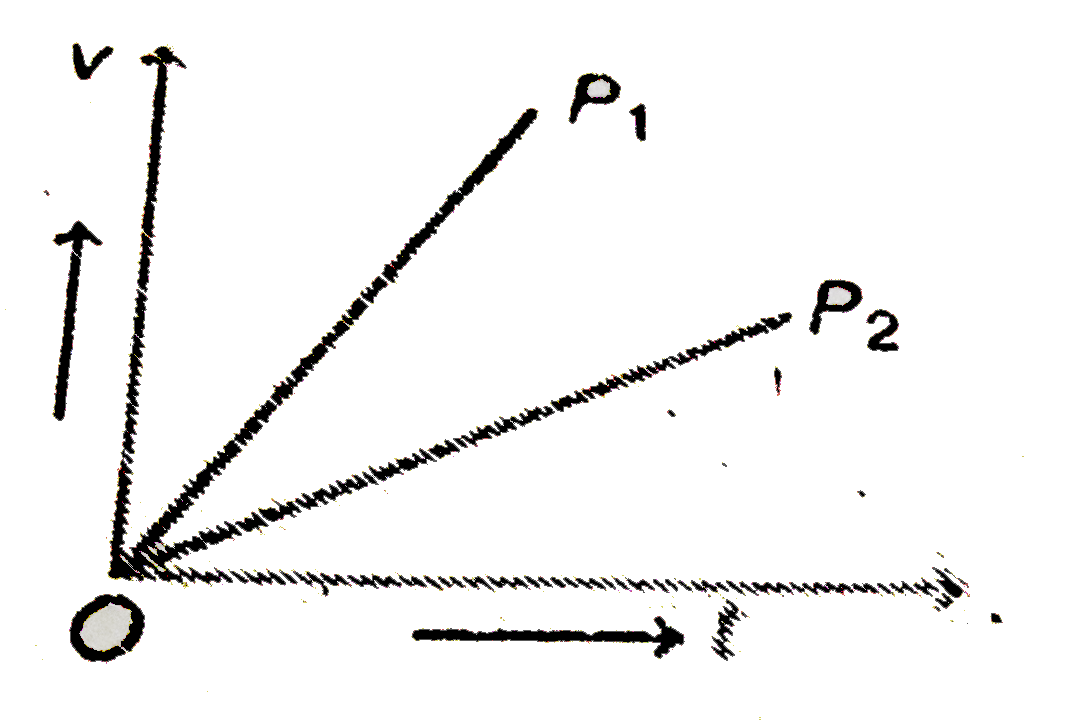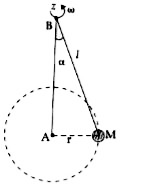An athlete is throwing a discus in a sports event. He holds the discus in his hand and gives it a circular motion by rotating his own body. Then he releases the discus in the desired direction. The discus moves along a straight line.
Which statement about the direction of the velocity of this discus is correct?
the direction of velocity constantly changes
the direction of velocity is constant through out the motion
direction of velocity changes at some points only.
both (b) and (d) are correct.
The correct Answer is:A
In case of circular motion, the direction of velocity of the object changes constantly.
Topper's Solved these Questions
- MEASUREMENTS AND MOTIONBOOK - MTG IIT JEE FOUNDATIONCHAPTER - MEASUREMENTS AND MOTIONEXERCISE - EXERCISE(INTEGER/ NUMERICAL VALUE TYPE )
5 Videos
- MEASUREMENTS AND MOTIONBOOK - MTG IIT JEE FOUNDATIONCHAPTER - MEASUREMENTS AND MOTIONEXERCISE - EXERCISE(ASSERTION & REASON TYPE)
8 Videos
- MAGNETIC EFFECTS OF ELECTRIC CURRENTBOOK - MTG IIT JEE FOUNDATIONCHAPTER - MAGNETIC EFFECTS OF ELECTRIC CURRENTEXERCISE - EXERCISE (INTEGER / NUMERICAL VALUE TYPE)
3 Videos
- SOME NATURAL PHENOMENABOOK - MTG IIT JEE FOUNDATIONCHAPTER - SOME NATURAL PHENOMENAEXERCISE - Olympaid/HOTS Corner
10 Videos
Similar Questions
A particle starts moving along a straight line path with velocity 10m/s. After 5s the distance of the particle from the starting point is 50m. Which of the following statements about the nature of motion of the particle are correct?
View SolutionShown in the figure are the velocity time graphs of the two particle P1 and P2 moving in same straight line in same direction. Which of the following statements about their relative motion is true?

Their relative velocity
View Solution
Knowledge Check
An athlete is throwing a discus in a sports event. He holds the discus in his hand and gives it a circular motion by rotating his own body. Then he releases the discus in the desired direction. The discus moves along a straight line.
At a particular point, how can you find the direction of velocity of discus?ADraw a perpendicular at that point.BDraw a tangent at that pointCVelocity may not have particular directionDNone of theseA particle starts moving along a straight line path with velocity 10m/s. After 5s the distance of the particle from the starting point is 50m. Which of the following statements about the nature of motion of the particle are correct?
AThe body may be speeding up with a constant positve acceleration.BThe body may be moving with a constant velocity.CThe body may have a constant negative acceleration.DThe body may be first accelerated and then retarded.A particle is moving on a straight line path with constant accleration directed along the direction of instantaneous velocity. Which of the following statements are false about the motion of particle ?
Athe average velocity is less than the average speedBthe average velocity is equal to the instaneous velocityCthe distance covered is equal to the magnitude of displacementDthe particle may reverse the direction of motion.
A mass M hangs on a massless rod of length l which rotates at a constant angular frequency. The mass M moves with steady speed in a circuilar path of constant radius. Assume that the system is in steady circular motion with constant angular velocity ω. The angular momentum of M about point A is LA, which lies in the positive z direction and the angular momentum of M about point B is LB. The correct statement for this system is :

View SolutionShown in the figure are the velocity time graphs of the two particle P1 and P2 moving in same straight line in same direction. Which of the following statements about their relative motion is true?

Their relative velocity
View SolutionAn athlete throws a discus from rest to a final angular velocity of 15 rad s−1 in 0.270 s before releasing it. During acceleration, discus moves in a circular arc of radius 0.810 m. Acceleration of discus before it is released is
View SolutionAn athlete throws a discus from rest to a final angular velocity of 15rads−1 in 0.270s before releasing it. During acceleration, discuss moves a circular arc of radius 0.810m. Acceleration of discus before it is released is.
View SolutionAn athlete throws a discus from rest to a final angular velocity of 15rads−1 in 0.270s before releasing it. During acceleration, discuss moves a circular arc of radius 0.810m. Acceleration of discus before it is released is.
View Solution
